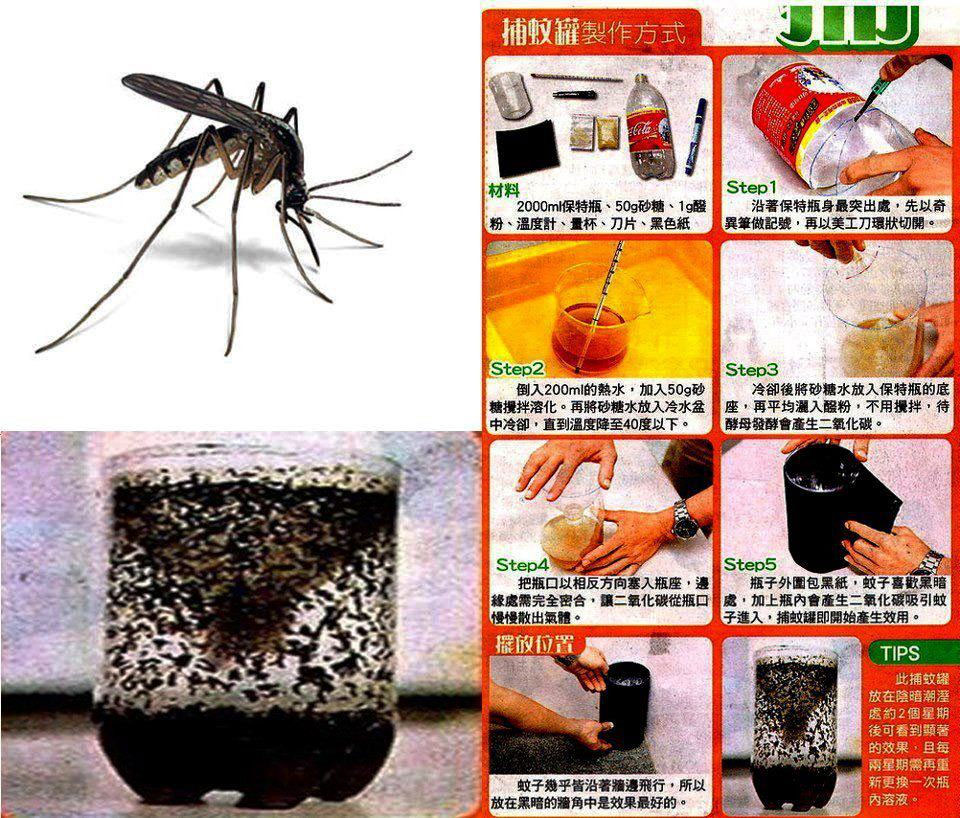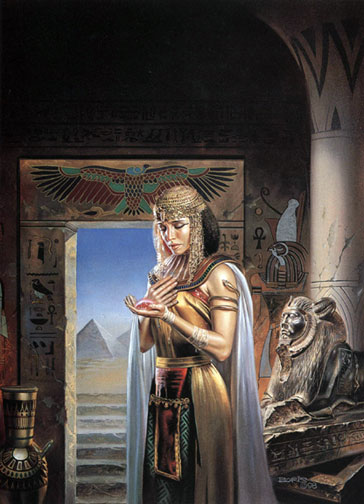 |
| Scroll below for full description in Chinese. |
Berikut ini cara yang MUDAH dan MURAH yang boleh anda mencubanya. (Cara buat di bawah video). Di bawah juga ada informasi tentang nyamuk. :)
Bahan yang diperlukan adalah :
- 200 ml air
- 50 gram gula merah
- 1 gram ragi/ yis (yeast)
- Botol plastik 1.5 liter
Langkah-langkah:

1. Potong botol plastik di tengah. Simpan bahagian atas/ mulut botol.

2. Campurkan gula merah dengan air panas. Biarkan hingga sejuk dan kemudian tuangkan di bahagian bawah botol yang telah dipotong itu.

3. Campurkan ragi/yis. Tak perlu digaul. Ini akan menghasilkan karbon dioksida.

4. Pasang/ masukkan potongan bahagian botol atas dengan posisi terbalik seperti corong.

5. Balutkan botol dengan sesuatu yang hitam, kecuali dibahagian atas dan letakkannya di beberapa sudut di rumah anda.

Dalam masa dua minggu, insya-Allah anda akan dapat melihat banyaknya jumlah nyamuk yang sudah mati di dalam botol.
Freudenrich, Ph.D., Craig. "How Mosquitoes Work" 05 July 2001. HowStuffWorks.com.
Up Close
- Chemical sensors - mosquitoes can sense carbon dioxide and lactic acid up to 100 feet (36 meters) away. Mammals and birds gives off these gases as part of their normal breathing. Certain chemicals in sweat also seem to attract mosquitoes (people who don't sweat much don't get nearly as many mosquito bites).
- Visual sensors - if you are wearing clothing that contrasts with the background, and especially if you move while wearing that clothing, mosquitoes can see you and zero in on you. It's a good bet that anything moving is "alive", and therefore full of blood, so this is a good strategy.
- Heat sensors - Mosquitoes can detect heat, so they can find warm-blooded mammals and birds very easily once they get close enough.
- Head - This is where all the sensors are, along with the biting apparatus. The head has two compound eyes, antennae to sense chemicals and the mouth parts called the palpus and the proboscis (only females have the proboscis, for biting).
- Thorax - This segment is where the two wings and six legs attach. It contains the flight muscles, compound heart, some nerve cell ganglia and trachioles.
- Abdomen - This segment contains the digestive and excretory organs.


Types of Mosquitoes
- Aedes - These are sometimes called "floodwater" mosquitoes because flooding is important for their eggs to hatch. Aedesmosquitoes have abdomens with pointed tips. They include such species as the yellow-fever mosquito (Aedes aegypti) and the Asian tiger mosquito (Aedes albopictus). They are strong fliers, capable of travelling great distances (up to 75 miles/121 km) from their breeding sites. They persistently bite mammals (especially humans), mainly at dawn and in the early evening. Their bites are painful.
- Anopheles - These tend to breed in bodies of permanent fresh water. Anopheles mosquitoes also have abdomens with pointed tips. They include several species, such as the common malaria mosquito (Anopheles quadrimaculatus), that can spread malaria to humans.
- Culex - These tend to breed in quiet, standing water. Culex mosquitoes have abdomens with blunt tips. They include several species such as the northern house mosquito (Culex pipiens). They are weak fliers and tend to live for only a few weeks during the summer months. They persistently bite (preferring birds over humans) and attack at dawn or after dusk. Their bite is painful.
Life Cycle and Breeding




Mosquito Development
Egg
Larva
Pupa
Adult

Mosquito Bites, Diseases and Protection
Diseases
- Malaria - Malaria is caused by a parasite that is transmitted by an Anopheles mosquito. The parasite grows in your bloodstream and can produce symptoms that develop anywhere from six to eight days to several months after infection.The symptoms include fever, chills, headaches, muscle aches and general malaise (similar to flu symptoms). Malaria is a severe disease that can be fatal, but can be treated with antimalarial drugs. Malaria is prevalent in tropical or sub-tropical climates.
- Yellow Fever - Yellow fever no longer occurs in the United States or Europe, but it is prevalent in Africa and parts of South America. It is transmitted by the Aedes aegypti mosquito. Yellow fever produces symptoms similar to malaria, but also includes nausea, vomiting and jaundice. Like malaria, yellow fever can be fatal. There is no treatment for the disease itself, only the symptoms. Yellow fever can be controlled by vaccination and mosquito control.
- Encephalitis - Encephalitis is caused by viruses that are transmitted by mosquitoes such as the Aedesmosquitoes or Culiseta mosquitoes. The symptoms of encephalitis include high fever, stiff neck, headache, confusion and laziness/sleepiness. There are several types of encephalitis that can be transmitted by mosquitoes, including St. Louis, Western equine, Eastern equine, La Crosse and West Nile. West Nileencephalitis is on the rise in the eastern United States, which has raised concerns about mosquito control .
- Dengue Fever - Dengue fever is transmitted by the Asian tiger mosquito, which is native to East Asia and was found in the United States in 1985. It is also transmitted by Aedes aegypti in the tropics. Dengue fever is caused by a virus that produces a range of illnesses, from viral flu to hemorrhagic fever. It is especially dangerous for children (see Dengue Fever & Dengue Hemorrhagic Fever for more information).
Mosquito Repellents





MOSQUITOES ARE IMPORTANT
Mosquito Summary
Top 5 Mosquito Facts
- Mosquito is Spanish for "little fly".
- Only female mosquitoes bite. Mosquitoes are attracted to heat, light, perspiration, body odor, lactic acid and carbon dioxide.
- Treat mosquito bites by washing them with soap and water. Avoid scratching the bite area by using anti-itch medicines, such as Calamine lotion.
- There are many diseases that can be caused by a mosquito bite, including:
- Malaria
- Yellow Fever
- Encephalitis
- Dengue Fever
- There are 3 basic things you can do to repel mosquitoes:
- Wear clothing that covers most of your body
- Use a mosquito repellant that contains NN-diethyl-meta-toluamide (DEET)
- Eliminate sources of standing water in your area to prevent mosquitoes from breeding
Freudenrich, Ph.D., Craig. "How Mosquitoes Work" 05 July 2001. HowStuffWorks.com.

















































